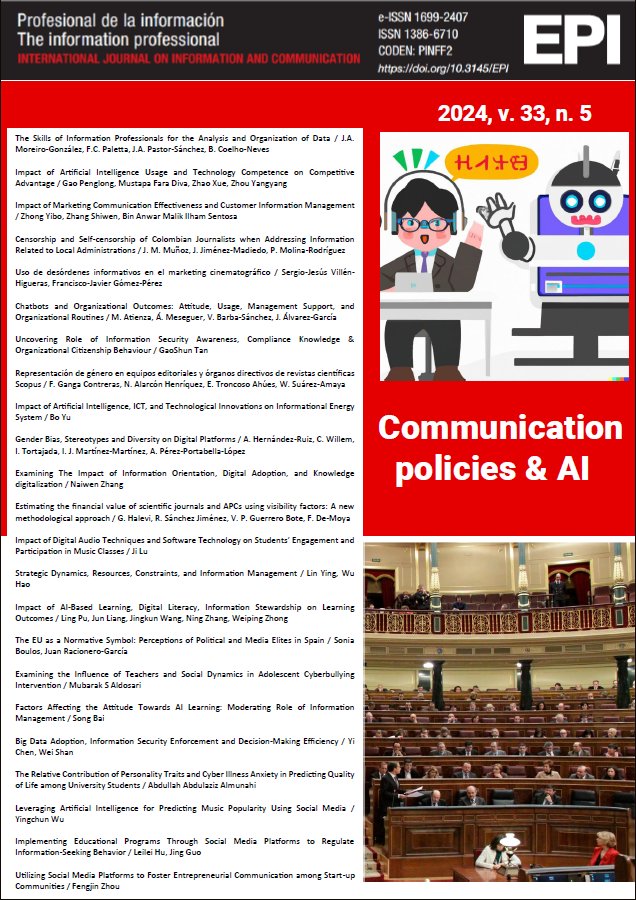Leveraging Artificial Intelligence for Predicting Music Popularity Using Social Media
DOI:
https://doi.org/10.3145/epi.2024.ene.0522Palabras clave:
Popularity of Music, Social Media, Predictive Model, DHB-ILSTM.Resumen
Music industry has been remarkably influenced by artificial intelligence (AI) due to the ability of the latter to predict song popularity based on social networking sites data, though it is rather difficult to predict the success of a song in any given scenario. This study is based on the premise that improved accuracy in prediction can be achieved by developing adaptive algorithms sensitive to changing trends of data. Therefore, this study proposes a new approach called Dynamic Honey Badger Optimization-Driven Intelligent Long Short-Term Memory (DHB-ILSTM), a model that can enhance music popularity forecasting with social media metrics, incorporating audio features. Features were extracted from audio sources like Spotify and social media metrics, genre-wise on newly released music tracks. During pre-processing, Min-Max normalization technique was utilized, and inputs standardized, while missing values were filled in. Feature extraction and dimensionality reduction used LDA. It was found that DHB-ILSTM algorithm in Python was superior, regarding the model without social media data in comparison, because it yielded an accuracy of 93% for audio features, recall of 90%, and an F1-score of 91% with a precision value of 88%. The findings underscore the versatility of the model in integrating heterogeneous data sources and adapting to dynamic trends, meaning that it is a strong solution to music popularity prediction using AI and advance optimization techniques.
Descargas
Descargas
Publicado
Cómo citar
Número
Sección
Licencia
Derechos de autor 2025 Profesional de la información

Esta obra está bajo una licencia internacional Creative Commons Atribución 4.0.
Condiciones de difusión de los artículos una vez son publicados
Los autores pueden publicitar libremente sus artículos en webs, redes sociales y repositorios
Deberán respetarse sin embargo, las siguientes condiciones:
- Solo deberá hacerse pública la versión editorial. Rogamos que no se publiquen preprints, postprints o pruebas de imprenta.
- Junto con esa copia ha de incluirse una mención específica de la publicación en la que ha aparecido el texto, añadiendo además un enlace clicable a la URL: http://revista.profesionaldelainformacion.com
La revista Profesional de la información ofrece los artículos en acceso abierto con una licencia Creative Commons BY.




